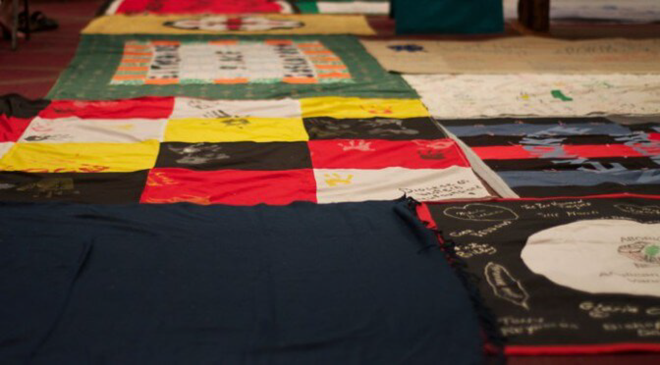Thursday, October 19, 2017
Librarians Encourage Reconciliation Through KAIROS Blanket Exercises
 |
| Photo: http://www.holytrinitytoronto.org/wp-content/uploads/2016/02/blankets-672x372.jpg |
As a Métis person and educator, reconciliation is something that is near and dear to my heart. In fact, I have started working with RISE (Reconciliation in Solidarity Edmonton) to gain more understanding of my own family’s past in light of everything that has happened between Canada and Indigenous people. Through this journey, I am often faced with the question of: “how do you encourage reconciliation?” and “what is the most effective way to educate students about Indigenous history?” This is where I came across the KAIROS Blanket Exercise.
So, what is a Blanket Exercise?
I’ve been asked this questions many times. Whether it’s a family member at a holiday meal or a friendly conversation in the coffee line up, I always say the same thing. It’s a way to educate people on a topic that not everyone is fully aware of -- a way to present Canadian history from an Indigenous perspective.
This is a perspective that has been muted throughout history. In fact, remembering my elementary school days, I don’t recall learning much about Indigenous culture. To be honest, I think we spent more time talking about pirates than Indigenous Peoples. My own family history was muted as well. We were actively told to hide our true identity as a survival mechanism. This left me and my generation grossly unaware of the struggles that Indigenous Peoples have dealt with for more than 150 years.
The KAIROS Blanket Exercise is an excellent tool for building a more accurate image of how Canada came to be what it is now. Through an interactive script that engages all participants, it takes participants through time prior to any European settlers setting foot on Turtle Island. By immersing yourself into the activity, every participant feels the impacts that the Canadian government continues to have on Indigenous Peoples.
Now, what does this have to do with the library?
This is a tough, but wonderful question. Librarians are not all about books and databases. I see librarians as educators, activists, and helpers. Most important, libraries are a place of community. So, if a student and/or faculty member walks into the library I instinctively want to help.
This is what happened with EDU 211: Aboriginal Education and Contexts for Professional and Personal Engagement. A friendly conversation about library services evolved into a personal conversation about my involvement with RISE and my role in facilitating Blanket Exercises. It was the perfect combination of relationships and willingness to try new things in the classroom. Since that initial conversation, librarians gathered to help!
We gathered together in the Education Kiva room to share the exercise with 60 students and future educators. Since this initial Blanket Exercise, I have been asked to facilitate more within the Education community.
I am extremely grateful and humbled by the experience and being able to share my story with the students. By sharing these moments with the University community, I hope that this will help to inform future generations of instructors and students.
I am extremely grateful and humbled by the experience and being able to share my story with the students. By sharing these moments with the University community, I hope that this will help to inform future generations of instructors and students.
Hiy hiy.
Subscribe to:
Post Comments
(
Atom
)






No comments :
Post a Comment